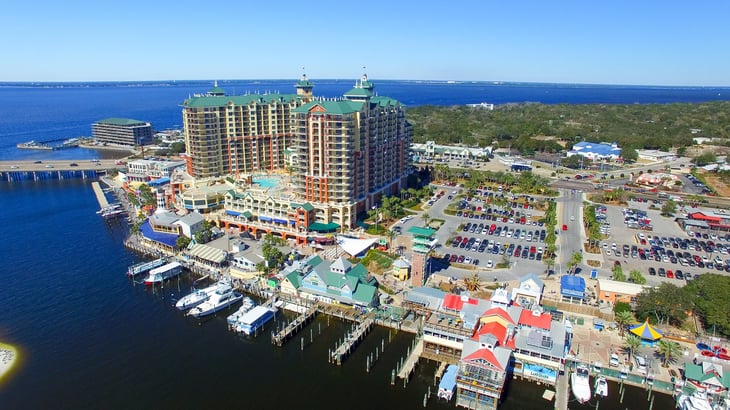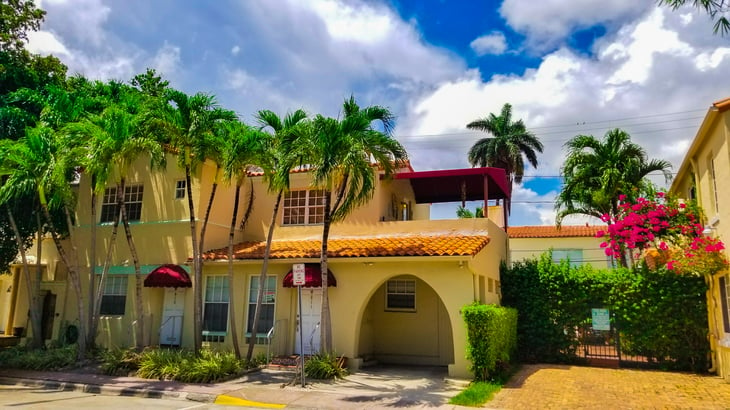
This story originally appeared on SmartAdvisor Match, by SmartAsset.com.
Investing isn’t just for the very wealthy or market-savvy. After all, online brokerages and low-fee mobile trading apps have lowered the barriers to entry for those looking to dip a toe in the markets: A 2020 study from Pew Research found that more than half (52%) of U.S. households are invested in the stock market, including 66% of households with earnings of between $53,000 and $99,999.
Still, there are some metro areas where people invest more than in others. With that in mind, SmartAsset analyzed the numbers to see which metro areas in the U.S. are seeing the sharpest growth in investing in recent years.
In order to conduct this study, we analyzed 198 areas across metrics related to taxable interest, ordinary dividends, qualified dividends, and capital gains over four years. All data comes from the IRS and is for 2013 and 2017.
Definitions for the four types of investment income we discuss in this article are as follows:
- Taxable interest. This comes from the money you lend someone else. For most people, this means savings accounts, checking accounts, and certificates of deposit (CDs) — all of which count as loans to a bank or other financial institution.
- Ordinary dividends. This is income earned from ownership of stock in a company.
- Qualified dividends. These are similar to ordinary dividends, except that they have been owned long enough to meet the IRS holding period qualification.
- Capital gains. This is income earned via selling capital assets. This can include your home or your car, but it typically includes stocks and bonds.
First, we ranked each metro area in each metric. We then found the average ranking for each metro area, giving every metric an equal weight. We used this average to create our final score. The metro area with the highest average ranking received a score of 100. The metro area with the lowest average ranking received a score of zero.
Following are the places where residents are investing.
1. Crestview-Fort Walton Beach-Destin, FL

At the top of this list is the Crestview, Florida, metro area. Investors in the Crestview area saw a 50.62% increase in average ordinary dividends, the seventh-highest jump for this metric in the study.
The locale places eighth overall for the increase in the percentage of tax returns reporting capital gains, an increase of 1.33 percentage points.
It also places eighth in terms of the four-year change in average qualified dividends, rising 62.04% from 2013 to 2017.
2. Naples-Immokalee-Marco Island, FL

Another Florida metro area, Naples-Immokalee-Marco Island, is No. 2. The Naples metro area ranks third overall in three different categories:
- Four-year change in percentage of returns with ordinary dividends: 1.35%
- Four-year change in percentage of returns with qualified dividends: 1.57%
- Four-year change in percentage of returns with capital gains: 1.75%
3. Charleston-North Charleston, SC

The Charleston, South Carolina, metro area ranks third-highest for the four-year change in average taxable interest with a jump of 32.85%. That said, the percentage of tax returns reporting taxable interest did decrease by more than 1 percentage point.
The percentage of returns in the Charleston metro area with capital gains went up 1.56 percentage points from 2013 to 2017, the fourth-highest uptick in the study for that metric.
The locale also ranks in the top 10 for the four-year increase in returns reporting qualified dividends, increasing 0.75 percentage points from 2013 to 2017.
4. Miami-Fort Lauderdale-West Palm Beach, FL

The Miami, Florida, metro area saw a 51.29% increase in taxable interest over the four years we considered for this study, the highest jump for this metric overall.
Like many metro areas, though, it did see a fall in the percentage of returns reporting taxable interest, a dip of 1.88%. Miami had the 22nd-highest four-year jump in average capital gains in the study, increasing by 113.81% from 2013 to 2017.
5. San Jose-Sunnyvale-Santa Clara, CA

The San Jose, California, metro area ranks second for the increase in the percentage of returns earning both types of dividends, an uptick of 1.62 percentage points for ordinary dividends and 1.72 percentage points for qualified dividends.
San Jose ranks fifth overall for its 2013-2017 increase in the percentage of returns with capital gains, rising 1.48 percentage points.
6. Austin-Round Rock, TX

The Austin-Round Rock, Texas, metro area is also seeing more residents investing. This metro area has the second-highest four-year increase in the percentage of returns showing taxable interest, an increase of 2.79 percentage points from 2013 to 2017.
The area finishes first for the other three metrics showing the percentage of tax returns with each type of investment return:
- A 3.03% increase for returns with ordinary dividends
- A 2.93% increase for returns with qualified dividends
- A 3.22% increase for returns with capital gains
7. Birmingham-Hoover, AL

The Birmingham-Hoover, Alabama, metro area saw a jump of 0.24 percentage points for the percentage of tax returns showing ordinary dividends from 2013 to 2017 — the 20th-highest increase for this metric in the study.
Over the same time period, the percentage of returns showing qualified dividends increased by 0.47 points, 22nd overall, and the percentage of returns showing capital gains increased by 0.84 points, ranking 21st overall.
8. Baton Rouge, LA

In the Baton Rouge metro area, the average four-year change in ordinary dividends was an increase of 44.19% from 2013 to 2017, the 14th-best rate for this metric in this study.
Baton Rouge places 26th out of 198 for both metrics measuring qualified dividends. The percentage of returns showing qualified dividends increased 0.40 percentage points, while the average qualified dividend value increased 44.64%.
9. San Francisco-Oakland-Hayward, CA

The San Francisco metro area had the sixth-highest 2013-2017 increase in tax returns showing ordinary dividends, an uptick of 1.14 percentage points.
It also had the fifth-highest increase in tax returns showing qualified dividends, rising 1.33 percentage points, and the ninth-highest jump for returns reporting capital gains, an increase of 1.32 percentage points.
10. Atlanta-Sandy Springs-Roswell, GA

The Atlanta metro area saw average taxable interest increase 18.79% from 2013 to 2017, the 15th-highest increase for this metric in the study.
The metro area ranks 31st out of 198 for average increase in capital gains, rising 107.90% over the same four-year period.





Add a Comment
Our Policy: We welcome relevant and respectful comments in order to foster healthy and informative discussions. All other comments may be removed. Comments with links are automatically held for moderation.